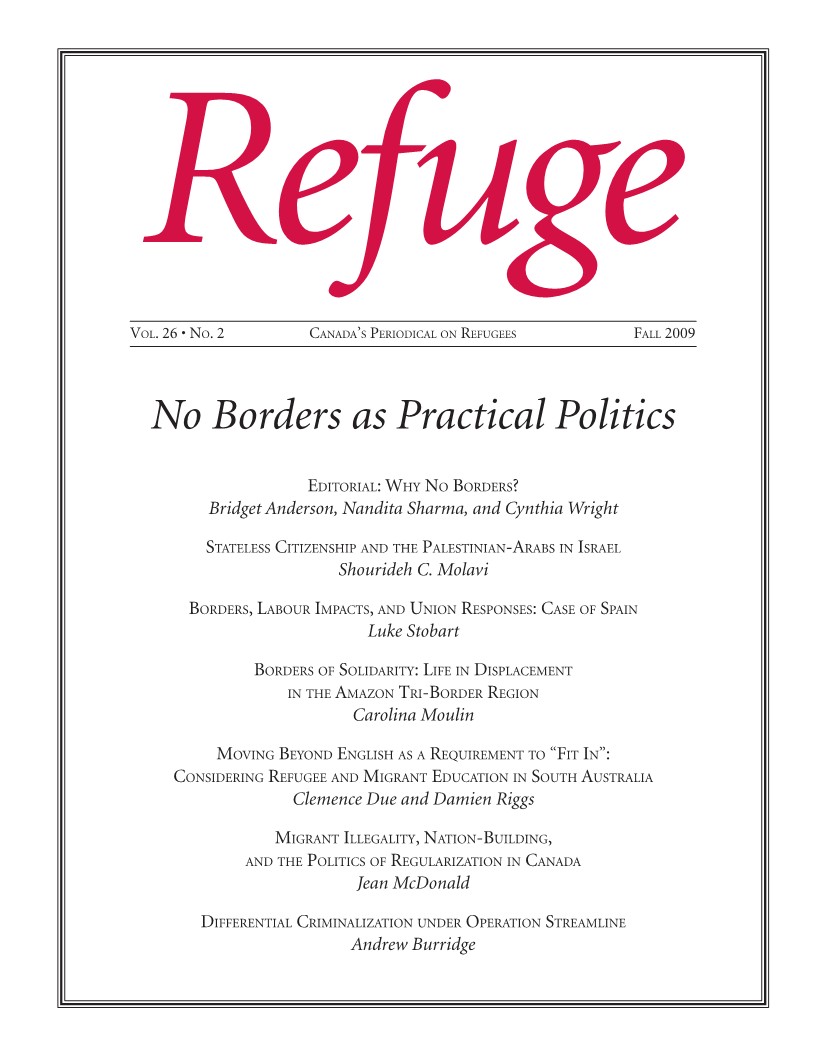Borders of Solidarity: Life in Displacement in the Amazon Tri-Border Region
DOI:
https://doi.org/10.25071/1920-7336.32077Keywords:
Brazil, Colombia, Peru, Tri-Border region, No Borders politics, forced displacement, refugee protection, solidarityAbstract
In 2004, the representatives of Latin American countries, gathered in Mexico City, devised a multilateral Plan of Action (MPA) in order to foster an improvement on refugee protection mechanisms in the region. Among its many proposals, the document advanced the idea of borders of solidarity. The proposal calls attention to new forms of thinking about border zones and border lives and how different actors might dialogue to improve the reception, assistance, and protection of displaced groups in a region marked by deep social inequalities and political violence. This paper is an attempt to make sense of these assumed new modes of governance of borders, trying to elucidate multiple perspectives and mechanisms of dealing with life in displacement in border contexts. The paper follows the narratives stemming from national and international officials, NGO and assistance workers, and displaced families’ associations, in the context of the Tri-Border area between Brazil, Colombia, and Peru. The paper aims to unveil how each discourse deals with the (dis)connections between borders, displacement, and protection. I argue that perceptions of the role of borders, as both bridges and barriers, and as spaces of life, vary according to how each group appropriates and interferes in the political dialogue. Some focus on the management of mobility; others on the improvement of life conditions for marginal groups; still others try to interrupt the political processes that make such marginalization possible in the first place. I propose three varying understandings of solidarity that speak to each of these perspectives— managerial, faith-based, and autonomous—stressing the problems and also the positive aspects that might be learned from approaching borders through the lenses of solidarity.
Metrics
Downloads
Published
How to Cite
Issue
Section
License
Copyright (c) 2011 Carolina Moulin

This work is licensed under a Creative Commons Attribution-NonCommercial 4.0 International License.
Refuge authors retain the copyright over their work, and license it to the general public under the Creative Commons Attribution-Non Commercial License International (CC BY-NC 4.0). This license allows for non-commercial use, reproduction and adaption of the material in any medium or format, with proper attribution. For general information on Creative Commons licences, visit the Creative Commons site. For the CC BY-NC 4.0 license, review the human readable summary.







